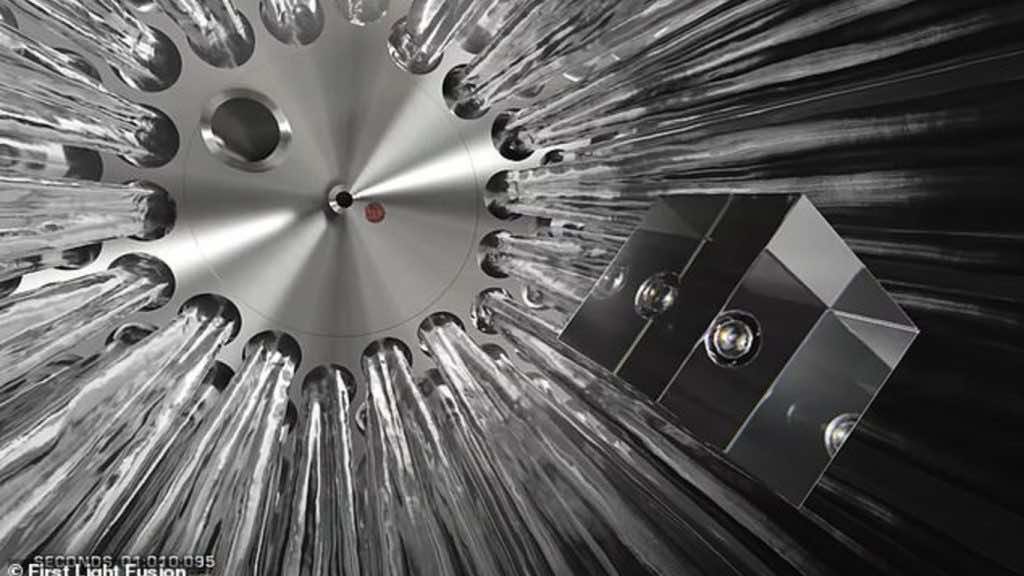Scientists have come up with a new technique to achieve nuclear fusion.
FirstLight Fusion, a spin-out from the University of Oxford, has used a technique called projectile fusion to accelerate fuel at 200 times the speed of sound.
The technique is based on the principle of pistol shrimp, which have an oversized claw that they can ‘click’ shut at very high speed.
Dr. Nick Hawker, co-founder, and CEO of First Light Fusion said: ‘Our approach to fusion is all about simplicity. Being simple, we believe projectile fusion is the fastest path to commercially viable power generation from fusion.’
Their technique is expected to be simpler, more energy-efficient, and has a lower physics risk. Instead of using complicated and expensive lasers or magnets, projectile fusion uses a high-velocity projectile.
In First Light’s case, a large two-stage hyper-velocity gas gun is used to launch a 100g projectile at a pellet containing the fusion fuel, in the form of tritium and deuterium.
The projectile reaches dizzying speeds of 14,540mph (23,399kph) before hitting the target – around 20 times the speed of sound.
As the fuel is hit by the projectile, it accelerates to over 156,586mph (252,000kph), or 200 times the speed of sound. This creates a pulse of fusion energy.
According to First Light Fusion, this makes the fuel the fastest moving object on Earth at that point.
The target containing the nuclear fusion fuel would be dropped into the reaction chamber before the projectile is launched downwards through the same entrance. The projectile would then catch up with the target, impacting it at just the right moment, creating a pulse of fusion energy.
‘That energy is absorbed by lithium flowing inside the chamber, heating it up,’ First Light Fusion explained.
‘The flowing liquid protects the chamber from the huge energy release, sidestepping some of the most difficult engineering issues in other approaches to fusion.
‘Finally, a heat exchanger transfers the heat of the lithium to water, generating steam that turns a turbine and produces electricity.’
Ultimately, First Light Fusion aims to develop nuclear power plants in which the process would be repeated every 30 seconds.
It is claimed that each target pellet could generate enough energy to power the average UK home for more than two years.
Compared to inertial fusion techniques, which require expensive lasers and magnets, First Light’s equipment is relatively simple and inexpensive.
It took less than £45 million to achieve fusion.
‘We aim for simplicity in the power plant engineering, but we also want to make the fusion process itself as simple as possible,’ Dr. Hawker said.
‘The key technology is our target designs. As objects, these are very complex, but physics is simpler than other fusion approaches; it can be understood and simulated accurately. With this result we have proven our new method for inertial fusion works and, more importantly, we have proven our design process. The design used to achieve this result is already months out of date. As soon as we reach the maximum with one idea, we invent the next, and that incredible journey of discovery is what is so exciting.’
Having achieved nuclear fusion, the team is now planning a ‘gain’ experiment, in which more energy is put out than in.
This technique has the potential to ‘revolutionize power production.’
‘First Light Fusion’s British-born technology could potentially revolutionize power production in the coming decades,’ he said.
Ian Chapman, chief executive of the UK Atomic Energy Authority, added: ‘Fusion promises to be a safe, low carbon and sustainable part of the world’s future energy supply, and we support all advances in this scientific and engineering grand challenge.
‘These results are another important step forward, and we are impressed that First Light have arranged an independent analysis of their result.’

